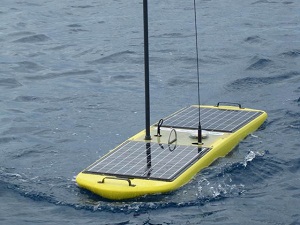Week in review: Solar sailing into the fall
 As the fall season fully gets into swing the solar industry doesn’t seem to be slowing down. Companies are introducing new products and more manufacturing. As some regions of the world and the US boom, many states seem to have missed the boat. There’s plenty of speculation as to why there’s not more progress going on in states like Florida and Louisiana, with rich solar resources, but poor incentive programs.
As the fall season fully gets into swing the solar industry doesn’t seem to be slowing down. Companies are introducing new products and more manufacturing. As some regions of the world and the US boom, many states seem to have missed the boat. There’s plenty of speculation as to why there’s not more progress going on in states like Florida and Louisiana, with rich solar resources, but poor incentive programs.
Florida, for instance. The Sunshine State recently hosted Solar Power International (SPI), but it doesn’t have residential power-purchase agreements (PPAs) or leases for photovoltaics. Such agreements, which allow third parties to own and install a system on homeowner’s roof or yard, have led to an explosion of residential solar installations in states like California—where third party ownership (TPO) of residential systems it higher than 75 percent of new installation—Colorado, Massachusetts and elsewhere. So what’s wrong with the Sunshine State? Legislation. The state’s current legislation hasn’t been set up to make it easy for companies like SunRun, SolarCity or Sungevity (some of the residential TPO leaders) gain entry into the state. Florida, however, does have some of the largest commercial-scale solar facilities on the east coast and some in the planning stages.
Still, there’s debate as to whether TPOs are good for the homeowner or bad. While arrangements are designed to help homeowners save cash on their electric bill over the lifetime of the solar array, fluctuating electric costs could mean that costs for the power produced by the solar array might be higher than those from off the grid. In addition, by agreeing to a lease or PPA, the homeowner ends up paying more for the solar array than they otherwise would—kind of like leasing a car versus buying it. So some states, like Florida, still take a wary approach to such offers.
Another state with a lot of solar potential that hasn’t taken advantage of it is Louisiana. That’s despite solar playing a central role in the state’s recovery from Katrina in 2005. When other sources of electric generation were cut off to New Orleans and surrounding areas, solar was first on the scene with emergency generators, not even diesel could be counted on as a secure energy provider in the early days of the recovery. Yet, the state has not fully embraced solar since then. Most likely because the state enjoys low electric costs, partly because of all the offshore drilling in oil and gas as well as the state’s biogas potential. The state’s solar industry also is held back by lower average incomes, meaning homeowners and others are less likely to go solar because they can’t afford the upfront costs, and until TPO companies and others enter into the state, they’re not likely too.
While photovoltaics haven’t taken off in Florida to the extent that some would hope, solar thermal has always been big in the state. Perhaps that’s why SPI was an ideal opportunity for Next Generation Energy (NGE) to introduce its new solar hot-water heating system, SunBandit. Instead of collecting the sun’s thermal heat as most solar hot-water heaters do, the SunBandit heats the water with photovoltaics, using the DC power to directly power an electric hot-water heating system. As such it gets rid of mechanical parts like pumps and reduces tubing and other parts of more traditional solar hot water systems. The company plans to start retailing its system in 2013.
Also announced at SPI was Isofoton’s new manufacturing plant, based in Napoleon, Ohio, the facility is scheduled start producing photovoltaics in November. The Spanish company plans will have 120 employees at the Ohio site producing 50 megawatts of PV modules annually when it launches, but could employ up to 330 employees as it expands production capacity to up to 300 megawatts.



